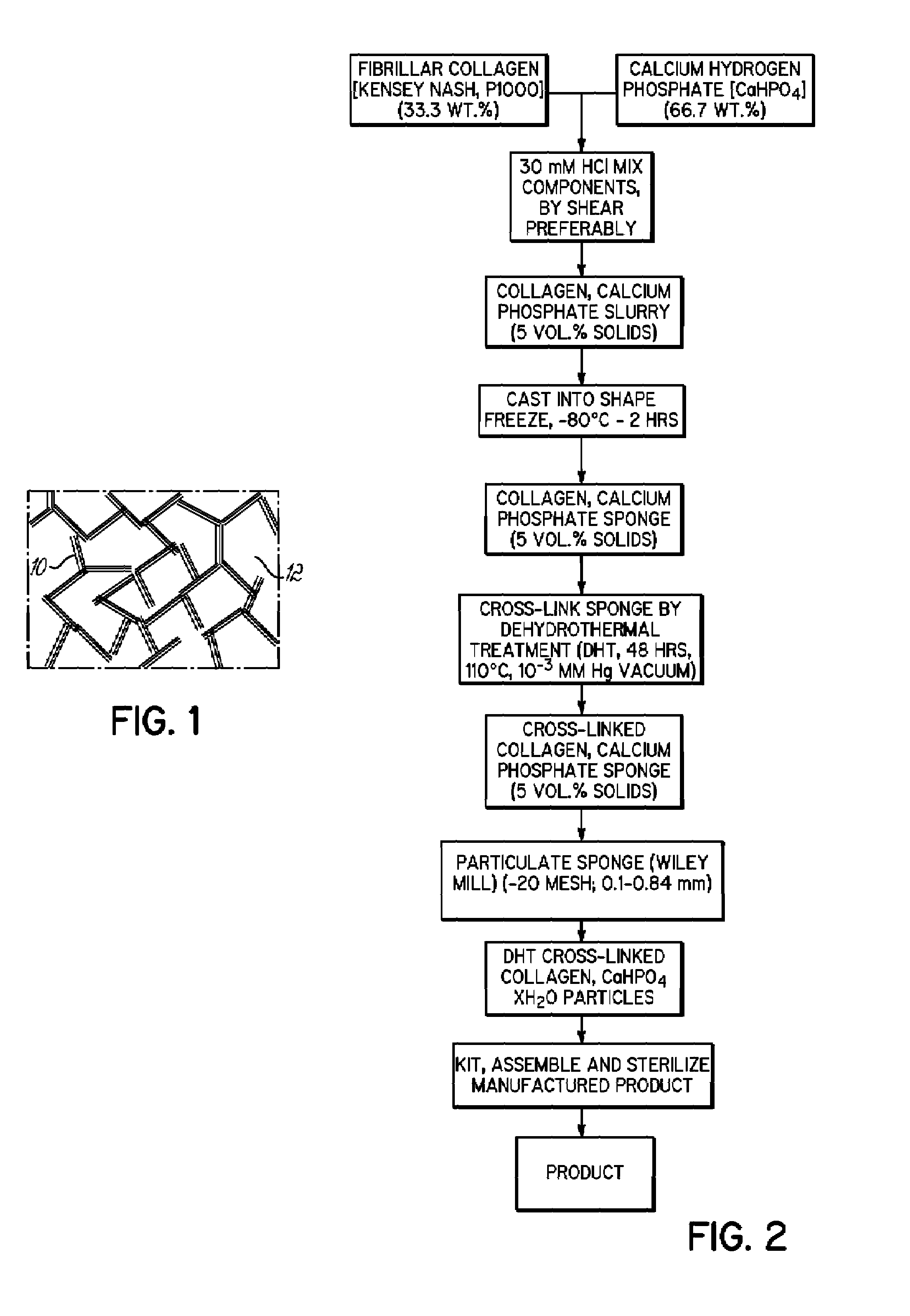Bone growth particles and osteoinductive composition thereof
a technology of bone growth particles and bone growth particles, which is applied in the field of bone growth particles and osteoinductive compositions, can solve the problems of limited clinical application of bone growth particles, limited autogenic and allogenic sources of human bone, and limited osteoinductivity of vehicles, so as to enhance the in vivo formation of bone tissue, facilitate delivery, and preserve the effect of availability
- Summary
- Abstract
- Description
- Claims
- Application Information
AI Technical Summary
Benefits of technology
Problems solved by technology
Method used
Image
Examples
example 1
[0062]A composite collagen and calcium phosphate gel dispersion was prepared (5 vol. % collagen gel) by weighing 6 g collagen. A 10 mM HCl solution was volumetrically measured (246 ml) to prepare a 5 vol. % gel. Twelve g sterilized dicalcium phosphate [CaHPO4] powder (66.7 wt. % calcium phosphate) was added and stirred to a uniform consistency. The combination was mixed, for example, by repeated shear material transport, until a uniform collagen gel dispersion of moderate viscosity (about 1,000 P to about 1,500 P) was obtained.
[0063]About 16.5 ml of the collagen and calcium phosphate gel dispersion was then cast into an autoclaved TEFLON® mold of 4.5 cm (L)×1.7 cm (W)×2.1 cm (H), with removable upper and lower autoclaved glass plates. The collagen gel dispersion was injected into the mold with the lower glass plate attached and the composition was evenly spread using a spatula. The upper autoclaved glass plate was then fixed in contact with the dispersion and the plates were secured...
example 2
[0069]Prior to opening a container containing particles of the above composition, the volume of a bone void to be repaired was determined. Based on the bone void, an appropriate volume of non-human animal blood was obtained, using a ratio of 0.75:1 blood or bone marrow aspirate:bone void volume. Appropriate volumes of liquid were added, as subsequently described, to obtain products of desired cohesive consistency (e.g. paste). As one example, per 1 cc dry particle volume, 0.75 ml whole blood was added to obtain a cohesive putty, or 0.85 ml whole blood was added to obtain a paste. As another example, per 1 cc dry particle volume, 0.75 ml bone marrow aspirate was added to obtain a cohesive putty, or 0.85 ml bone marrow aspirate was added to obtain a paste.
[0070]Immediately prior to implantation on an isolated bone, the liquid was mixed with the composition to obtain a paste of desired consistency. The bone void site was irrigated as needed and the paste was packed into the bone void. ...
PUM
 Login to View More
Login to View More Abstract
Description
Claims
Application Information
 Login to View More
Login to View More - R&D
- Intellectual Property
- Life Sciences
- Materials
- Tech Scout
- Unparalleled Data Quality
- Higher Quality Content
- 60% Fewer Hallucinations
Browse by: Latest US Patents, China's latest patents, Technical Efficacy Thesaurus, Application Domain, Technology Topic, Popular Technical Reports.
© 2025 PatSnap. All rights reserved.Legal|Privacy policy|Modern Slavery Act Transparency Statement|Sitemap|About US| Contact US: help@patsnap.com

